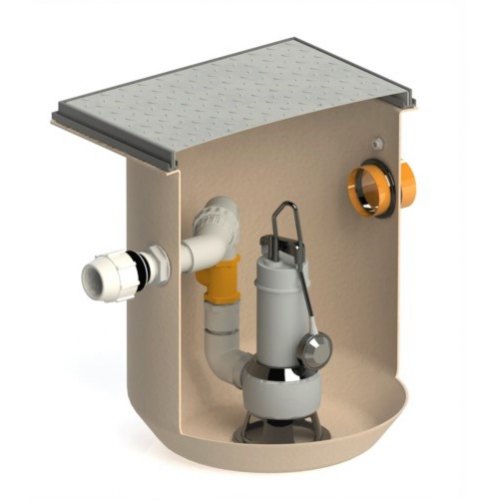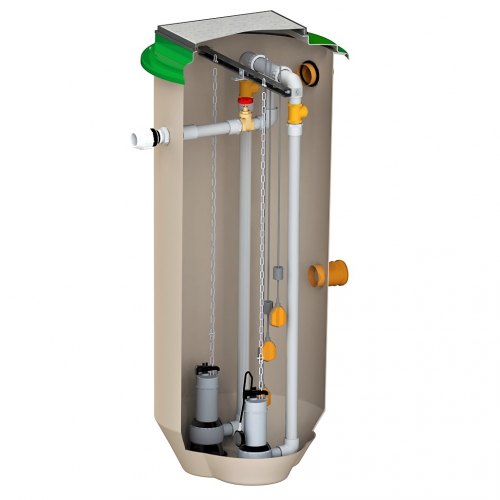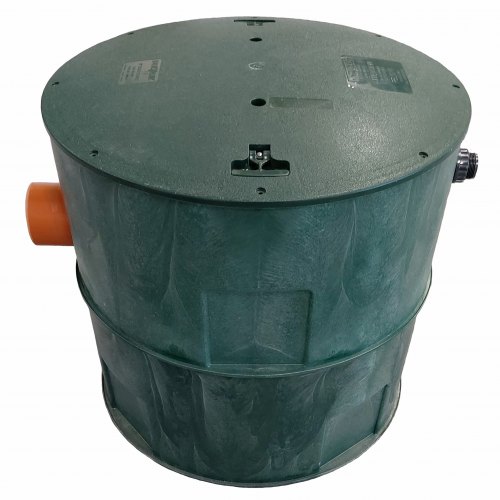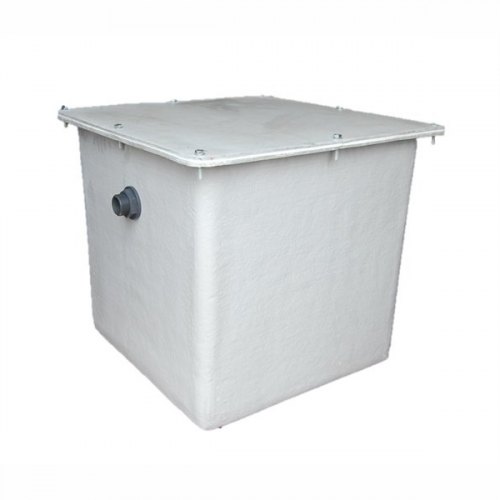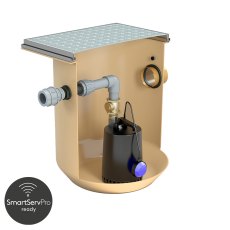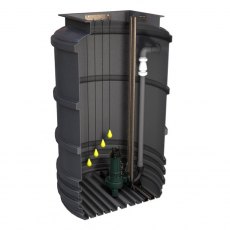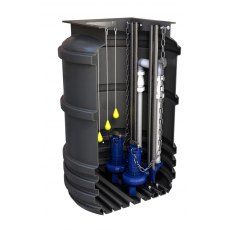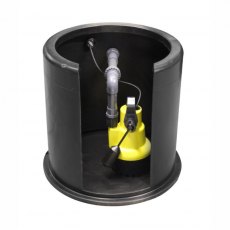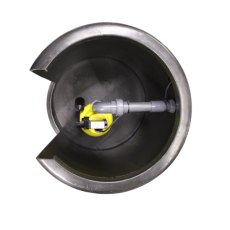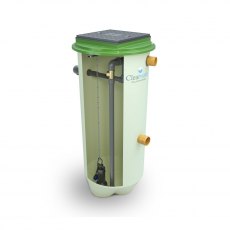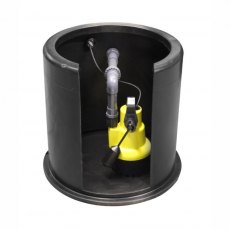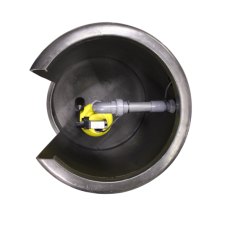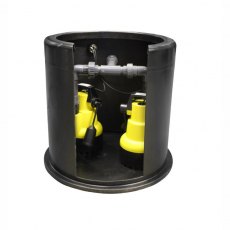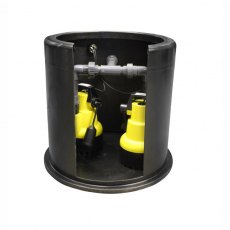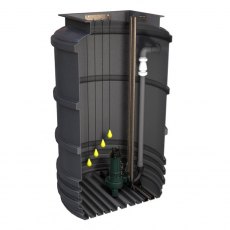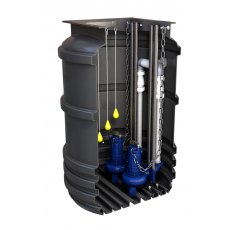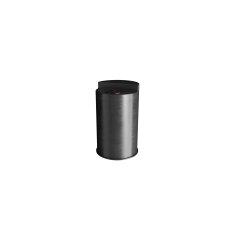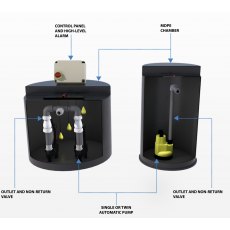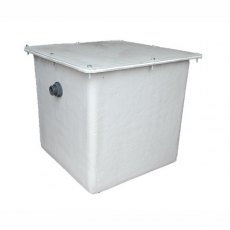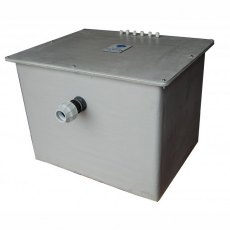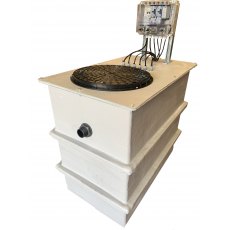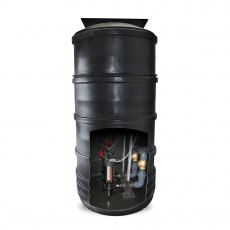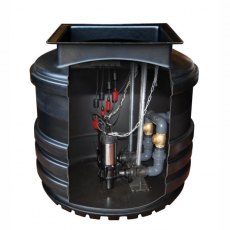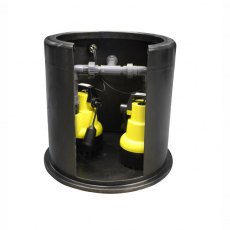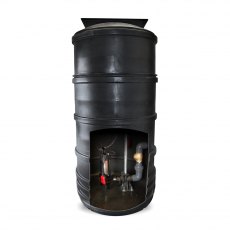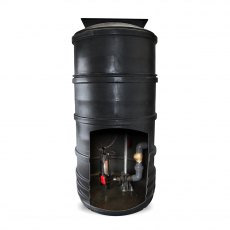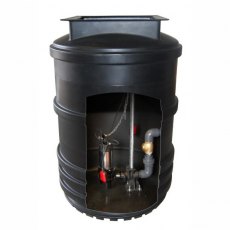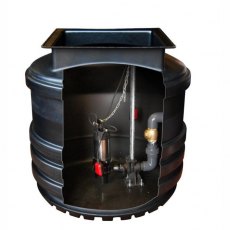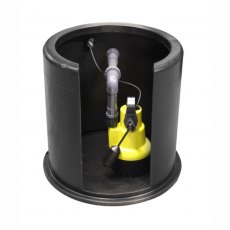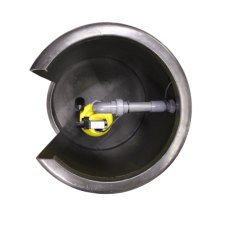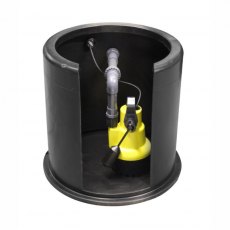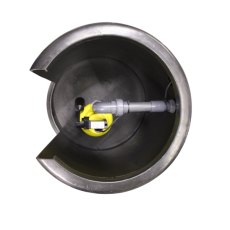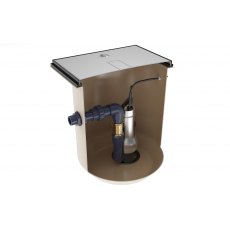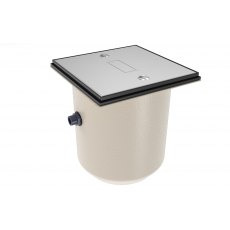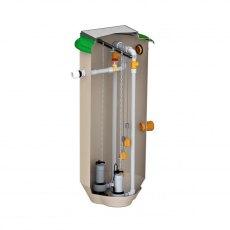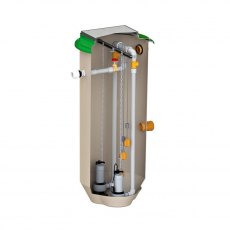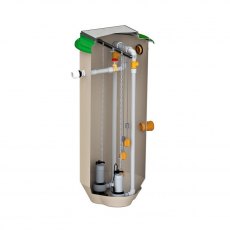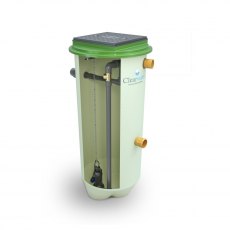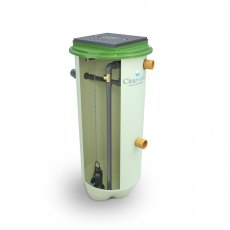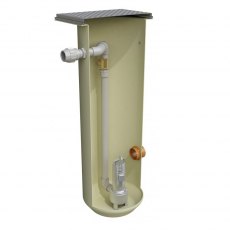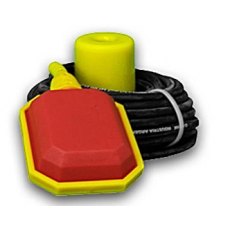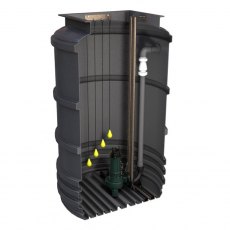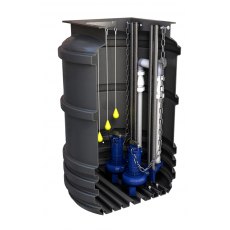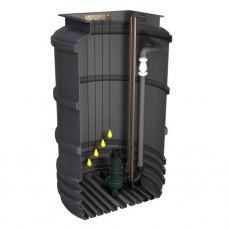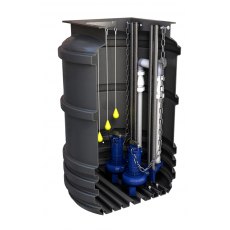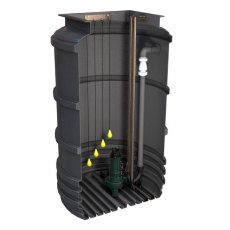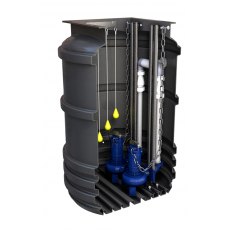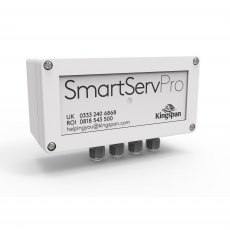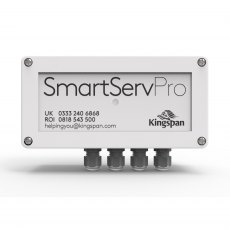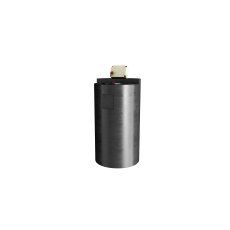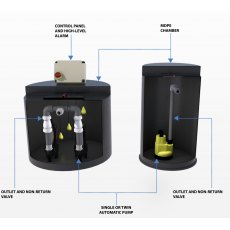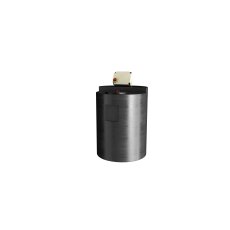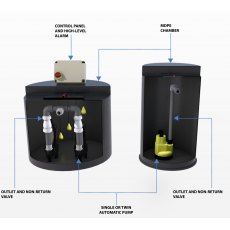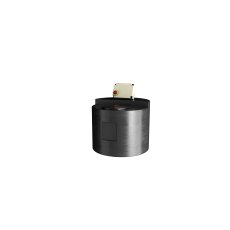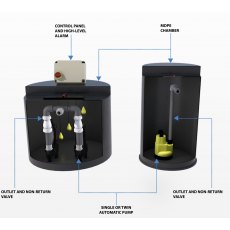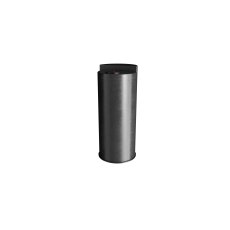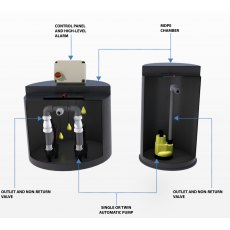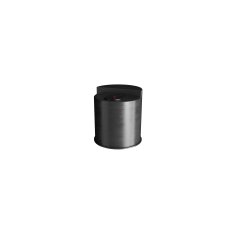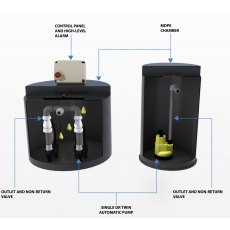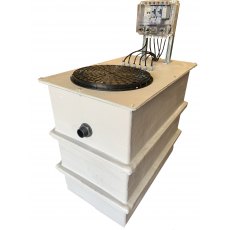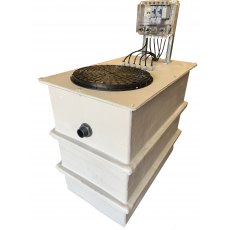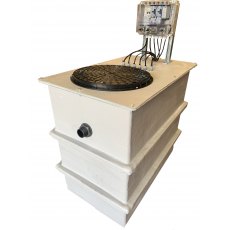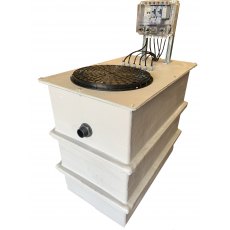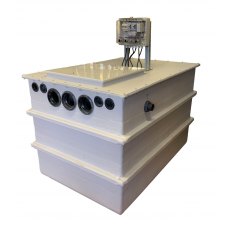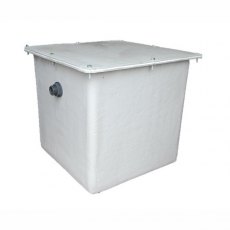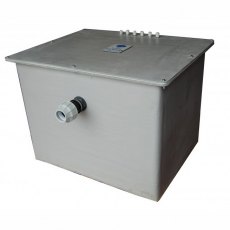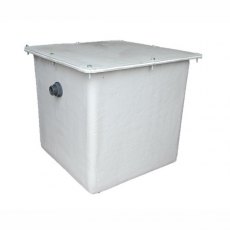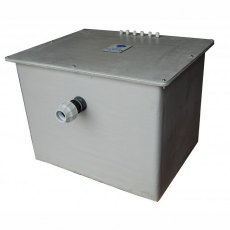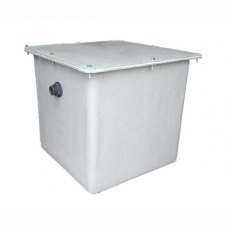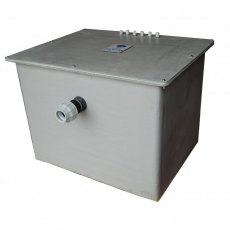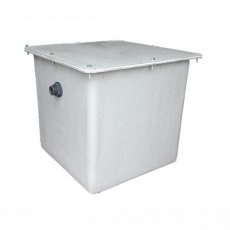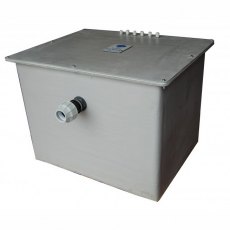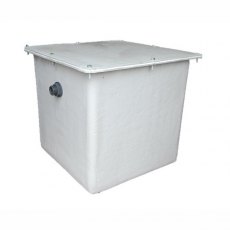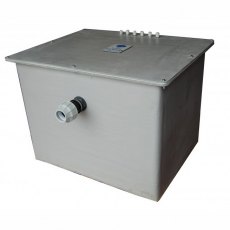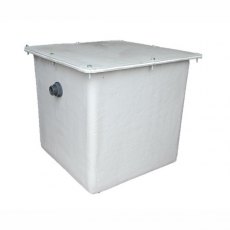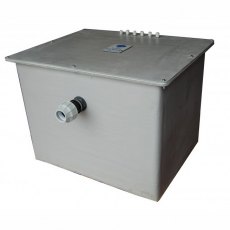Pumping Stations
How do sewage pump stations work?
Sewage systems are made up of a network of pipes that carry sewage from homes and businesses to the main sewers. Usually the pipes will rely on gravity for the waste to flow down into the main sewer. However, if the main sewer sits on higher ground than the domestic sewage pipes, you’ll need a sewage pumping station to push the sewage into the main sewage network.
A sewage pumping station consists of a large tank, sometimes called a wet well, that receives sewage and waste from homes and buildings. When the sewage reaches a certain level in the tank, a pump will start to pressurise the sewage, pushing it out of the wet well and into the main sewer and onto its point of destination – usually a treatment plant.
When do you need a pump station?
There are many reasons that a sewage pump station is preferable to a normal, gravitational waste pipe system. It might be that the cost of groundworks to allow sewage to flow by gravity outweighs the cost of a sewage pumping station. You may have basement floors that are below the main sewer, so a sewage pumping station will push the waste upwards until gravity can take over and deliver the waste into the main sewer. If the sewer line passes over a ridge, you may need a sewage pumping station to help transport the waste across to the main sewer.
What are the advantages of a sewage pumping station?
- If you’re installing a new sewage system, a pumping station offers a lot of convenience and could cut construction costs. Our range on pre-assembled units are easy to install and maintain, offering a simple, economical solution to get sewage where it needs to be.
- Pumps are available in different sizes for both domestic and commercial applications – usually with a wide intake to prevent blocking.
- Sewage is pumped automatically without the need for any human contact, minimising health risks.
- Operators can be kept updated via remote monitoring systems fitted in the pump stations. They are also fitted with alarms to alert you to any problems with the system.
Which sewage pump is best?
This will depend entirely on your specific project and requirements! One of the most crucial factors you will want to check is how much sewage the pump can move per hour.
Unsure which pump is best for you? Check out more frequently asked questions about Sewage pumping stations here.
Pumping Stations FAQs
Does every house need a sewage pump station?
Sewage pumping stations are needed when gravity cannot be relied upon to move wastewater and sewage towards the main sewer line. Perhaps there is a lack of gravitational flow if, for example, the sewage is situated below the main sewer level and would need to be pumped upwards. Maybe the sewer is obstructed by a ridge or there is no gravity system in place. In these circumstances, installing a sewage pump station could be much cheaper and just as effective as installing a sewage system with gravitational flow.
You’ll find many advantages to having a sewage pump station installed at your property. They are fitted with alarms that will notify you if there are any problems with the system. Sewage pump stations also work automatically so there is minimal human contact. This reduces the risk of health issues.
How much does it cost to install a sewage pump station?
The first cost to consider is for the sewage pump station itself. And this will vary greatly depending on the specific model you chose. Whether you need a single or double sewage pump station, you’ll find our prices at Tanks Direct are extremely competitive.
Then comes the cost of installation. If you are installing a pump for the first time in a space previously unprepared for installation, the cost will be higher than if you are replacing an existing pump. This is because all the additional preparation required has already been done. The location of your install could also have a bearing on the installation cost. If the site is awkward to get to or a difficult material to dig up, your costs will be higher.
You’ll also want to consider the ongoing maintenance costs of sewage pump stations. Regular servicing is essential to keep your equipment working as well as possible. Sewage pumping stations are subject to wear and tear and require regular servicing to operate effectively. Catching any issues early will minimise the risk of failure and help prevent costly repairs.
How often do sewage pump stations need to be emptied?
It is vitally important that your sewage pump station is regularly serviced and properly maintained. This will improve the day-to-day efficiency of your sewage treatment pump and help improve its lifespan. By inspecting the pump regularly, you can ensure all the components are working correctly
It is advisable to get your tank serviced once a year. Your tank will be emptied and cleaned, with any blockages removed. If any defects are detected during the service, it’s best to get faulty parts
replaced as soon as possible. Failure to fix problems quickly can lead to major issues further down the line. For help and advice on how best to maintain your sewage treatment plant, please contact our friendly and knowledgeable team.
Are sewage pumping stations noisy?
Sewage pumping stations can vary in noise levels, but they generally produce some degree of noise. The noise from a sewage pumping station primarily comes from the mechanical equipment used to pump wastewater, such as pumps, motors, and control systems. These machines can generate a humming, buzzing, or whirring sound, which can be audible depending on several factors. Larger pumps typically produce more noise than smaller ones. Modern stations often incorporate soundproofing materials and construction techniques to help minimise noise pollution. Most sewage pumping stations are designed to operate around the clock, but you may find that noise is more noticeable during quiet times, such as during the night, when ambient noise levels are lower.
Local regulations and community planning may dictate the noise levels allowed for sewage pumping stations. Authorities often set limits to ensure that these facilities do not become a significant source of noise pollution in residential areas.
Do sewage pumping stations smell?
Sewage pumping stations are designed to transport and pump wastewater, which can contain organic matter and sewage, leading to the potential for odours. However, the intensity and prevalence of these odours can vary widely. Well-designed systems incorporate features to minimise odours, such as properly sealed access points and ventilation systems that help disperse or filter out odorous gases. Regular maintenance of these systems, including cleaning and inspection, is crucial to ensure their effectiveness in controlling odours. Smaller domestic sewage pumping stations may generate fewer odours compared to larger, industrial-scale facilities. This is because the volume of wastewater and the concentration of organic matter are typically lower in residential systems. Warm and humid weather can intensify odours, making them more noticeable, and windy conditions can disperse odours and make them less perceptible. If the pumping station is located close to your home or living areas, you may be more likely to detect any odours, especially if there are issues with the station's design, maintenance, or ventilation.
Many local regulations and building codes require domestic sewage pumping stations to incorporate odour control measures to minimise any potential nuisances to nearby residents. These measures may include odour-neutralising chemicals or filters in the ventilation system.
How long can a sewage pump run continuously?
Sewage pumps are typically designed to operate intermittently rather than continuously. The duration a sewage pump can run continuously will vary. Smaller domestic sewage pumps are generally not built for continuous operation and are meant to pump wastewater as needed. Larger, industrial-grade pumps may have the capacity and durability to run continuously for extended periods, but even they may require periodic rest to prevent overheating and wear. Domestic sewage pumps are designed to handle typical household or small-scale sewage flows. If the pump has to handle a sudden surge or an unusually high volume of wastewater, it may not be designed for continuous operation under such conditions.
Continuous operation can lead to heat build-up in the pump's motor and components and overheating can cause damage or reduce the pump's lifespan. Pumps are usually designed with cooling mechanisms, but they may still need breaks to dissipate heat effectively. Regular maintenance can extend a pump's operational duration. Always consult the manufacturer's guidelines and specifications for your specific sewage pump. These guidelines often include recommended operating durations and intervals for rest. Following these recommendations is essential to ensure the pump's longevity and efficient operation.
How long should a sewage pump run?
Your sewage pump should not run constantly. Usually it should run from 10 to 15 seconds until the float switch detects the water level has dropped adequately. It will then cut off. If your sewage pump is running constantly it may need to be serviced, repaired or replaced. The average life expectancy of a sewage pump is about 10 years.
Which make of pumps are used in the Sewage Pumping Stations?
In our 2” vortex range we use Hippo 50 pumps for up to 6m head and Hippo 100 pumps for up to 10m head. In our 2” macerator range we use Semison 125GR pumps, in our 2½” vortex range we use Semison 650 pumps and lastly in our 3” vortex range we use hippo 80-200. Details of which can be found either on our website or a copy can be sent across please call for more information.
How do I know if my sewage pump is working correctly?
You may need to service or replace your sewage pump is you find the following: -
- If the water at the discharge point is dirty or brown
- The pump is not working at all or sounds like it’s struggling to pump
- Your pump is constantly running and doesn’t switch off even though no one is using the facilities in the building
- Sewage is backed up into the building
- There is a smell of sewage
- There is no fluid emptying from the holding tank
- There is no power to the pump
If you do require a Service, please give a ring to arrange.
Will my sewage pump need maintenance?
Yes, it is cost effective to get your sewage pump regularly maintained to lengthen the life of the pump. Typically pump servicing will include: -
- Cleaning out the sump chamber
- Cleaning of pumps and float switch
- Electrical test of pumps and all floats
- Checking all cables for damages and general wear
What size pump do I require for my Sewage Pumping Station?
The size of the pump required is down to the rise to main from the tank to the sewer, please call us for further help on this.
What size tank do I need?
Tanks are sized on the number of people using the system, you should allow 150 litres per person multiplied by the number of people using the property to calculate your 24hr storage capacity.
For commercial properties please contact us, and we can help size this for you.
Do the tanks come with any pre-drilled inlet holes?
No the tanks are supplied without an inlet hole, this is usually drilled on site however we do supply the seal to make the hole water tight and should you require us to drill this for you at the factory, we can offer this also.
What type of sewage pump do I need?
Sewage pumps are available in a few different options including effluent pumps, grinder pumps or macerator pumps and submersible pumps. Effluent pumps remove the grey wastewater that stays in your septic tank after the solids have settled and are good for residential and small commercial applications.
Grinder pumps or macerator pumps collect wastewater from your household appliances and fixtures including toilets, washing machines, and bathtubs. Grinder or macerator pumps works by the pump grinding the waste into a fine slurry before pumping it to your septic tank when the water in the tank reaches a certain level from a holding tank to collect waste. Submersible pumps are used for residential, commercial, and agricultural applications.
If you are unsure of the type of sewage pump you need, we are more than willing to help. Please give us a call or send us an email.

 Login
Login
